
|
Making the Best of Your Soil Benefits & Remediation |
Garden Tip TB1487 |
Technical Bulletin Series
|
This chart is the standard for reporting soil
composition categories. Each of the twelve categories is
classified and named, but notice (by comparing to the
water movement chart below) just how much water movement
rate varies even within a singal class. Loam varies from 0.14 in/hr
to 1.2 in/hr (an 850% increase).

The various types of soil composition are identified by their "mix" of the three soil particle size categories; Sand, Silt and Clay. To think you have "DG" (decomposed granite) specifies the mineral type but does not address the particle size and permeation rate. |
In this chart, though basic categories are identified
by abbreviation, the color categories divide
soil composition by flow rate. Very Slow, Fair, Good and Rapid.
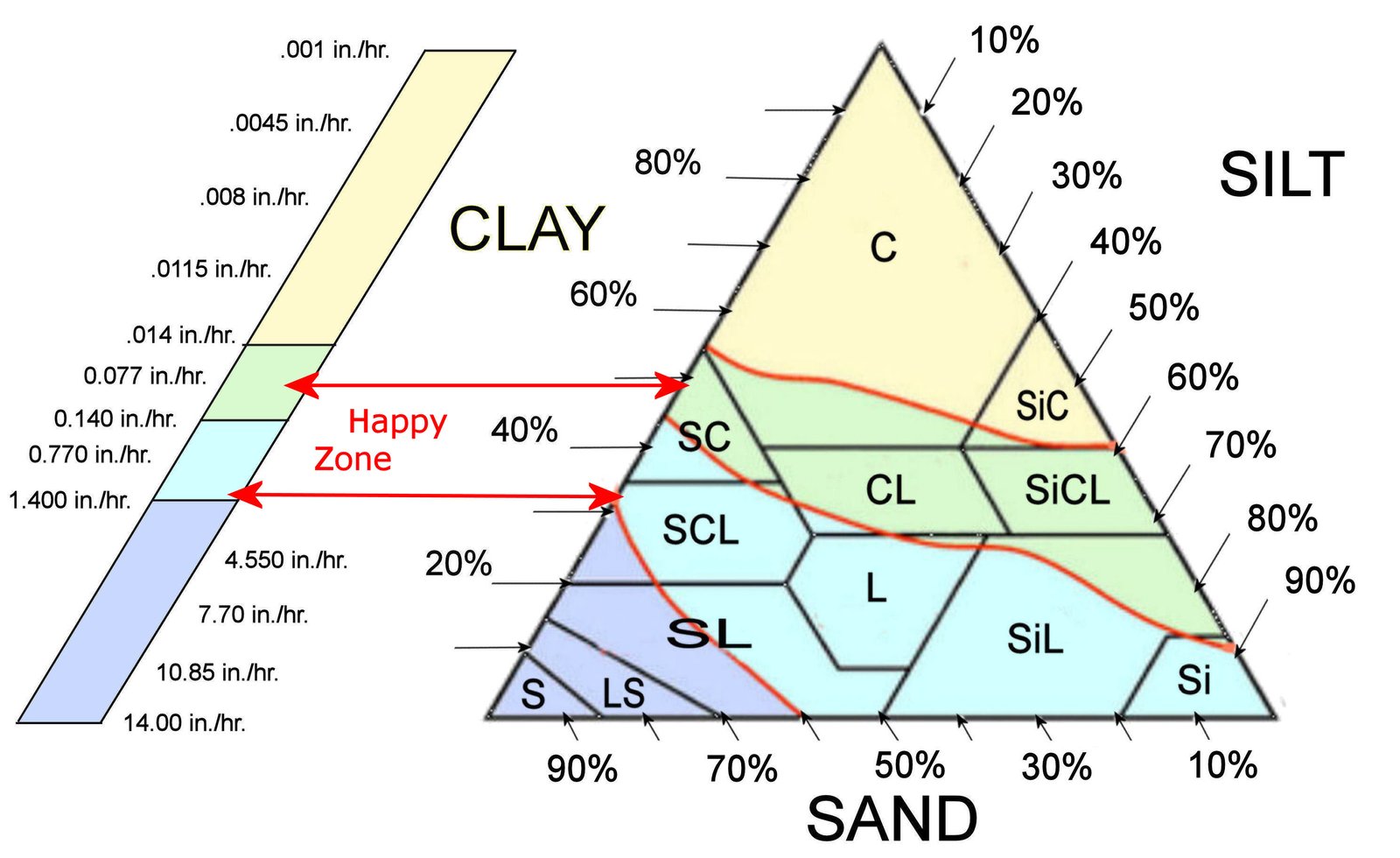
|
|
Lets begin with the more desireable categories of Fair and Good.
The light-green or Fair category will exhibit moisture movement that more easily supports the health of most plants. Here water in the soil WHEN SATURATED moves between 0.014 inch per hour and 0.14 inches. NOTE: this is a measured movement when the soil is first already saturated with water - no air pore space is left. When a soil is totally void of water, and an irrigation is started moisture will initially move at a rate of up to 10 times (or greater) of the saturated rate. As the air pore space then begins to fill, during the irrigation, this rate begins to drop towards the flow rate specified for saturation. 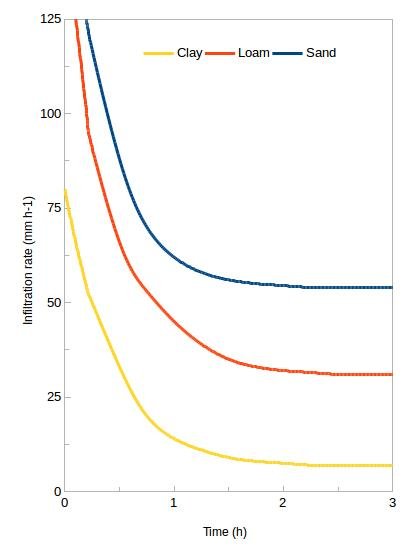
Because you maintain adequate soil moisture for your landscape
and garden, you will not actually witness water moving at
this very slow Saturation Rate, but this [HCR}
Hydraulic Conductivity Rate is vital in calculating how
the water you provide during an irrigation will
permeate into your soil.
Keeping healthy landscapes and gardens, while being "Water Wise" is the goal. Applying water at a rate your soil can accept it - is called "Matching" and is utilized throughout the GC Pro-I Matching Calculator. You can use the features and instructions of this Calculator in order to discover the type of soil composition that is present in your landscape or garden. |
|
Now, that you know what type of soil you have, we can
get started talking about the benfits of that soil
or the things that can be done to improve it.
There are a variety of Loamy soils (first chart), and for the most part these have more desireable parameters. They are fairly good and both holding water, and allowing it to flow. If the [HCR] for your soil falls between 0.07 and 1.40 inches per hour your landscape has the benefit of having a soil right in the "Happy Zone". Congratulations! 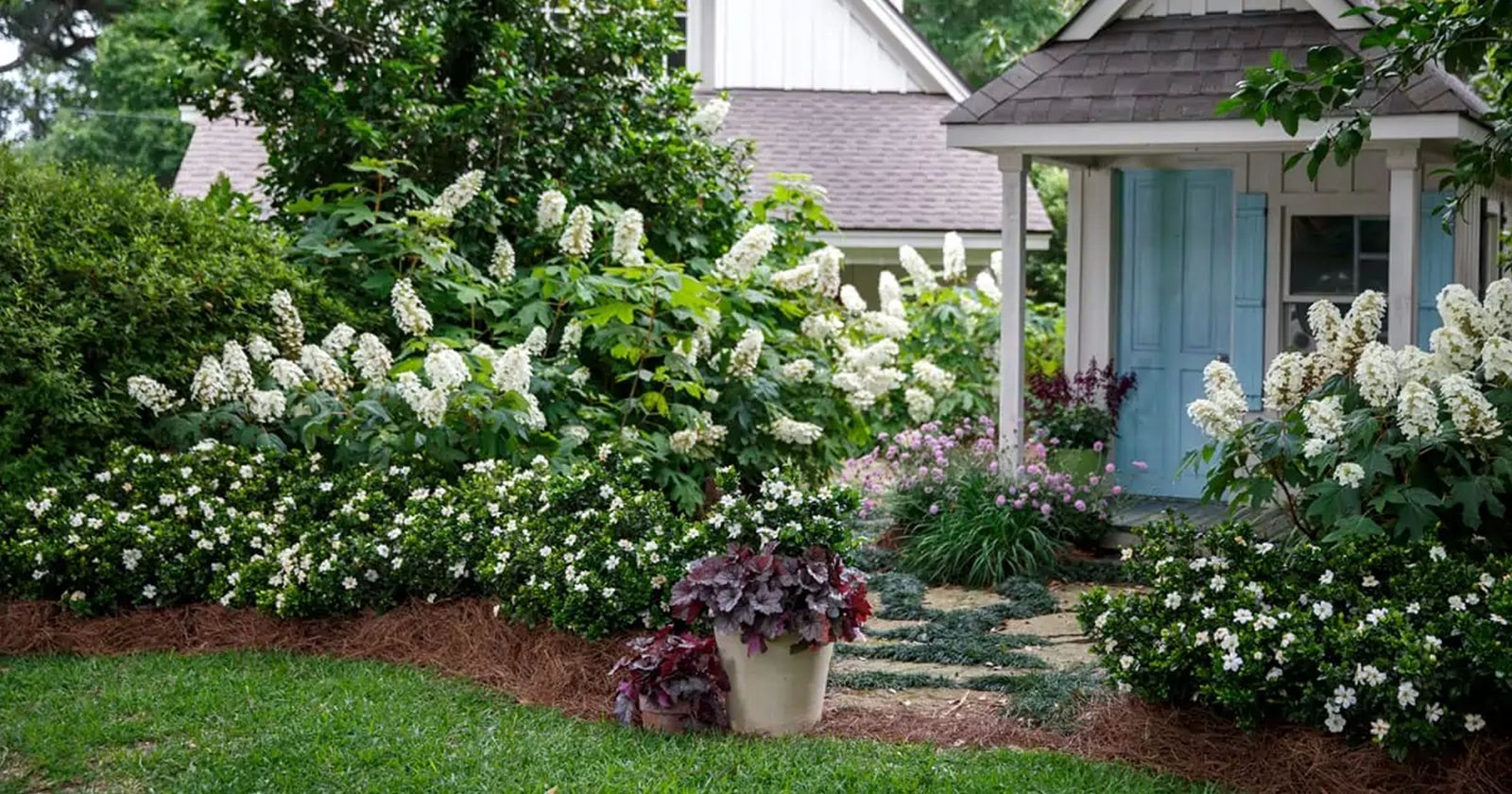
Your interest will be in maitaining that nice soil,
and taking advantage of the many plant varieties that
will be able to thrive there. Your focus can be
on plant beauty, color and perhaps some of those more
fragil varieties. Do keep in mind that even good soil can't
change the challenges of extreme heat or hard alkaline water.
You will not likely need to remediate it. As this zone of nice-soil has a very waid range of flow rates, it will still be important to provide enough water, at the best rate and avoid wasting water. |
|
What about those of us dealing with soil that is not so happy?
Lets begin with sandy soils that drain too fast. This begins with HCR rates above w inches per hour. This may not seem fast, but remember; this is movement through Saturated Soil, not soil moist but ready to accept water. Added to the concern is that these soils generally dry out so quickly. If filling a newly dug hole with water, these soils will drain that hole in less than 10 to 15 minutes. This is NOT good drainage - this is Too Fast. It will be unavoidable getting moisture to go deep, but nearly impossible for that soil to remain moist for long. Succulants (not all) caqn better handle this issue as they store water in their leaves or stems. Even drought tolerant plants can struggle when the moisture won't stay very long in the soil. So, depending on just where your soil [HCR] falls, you may want to begin doing some remediation in order to reduce water expense and improve plant health. This will require either vertical mulching or radial trenching techniques. Which of these is best for your plants and landscape will depend on the type of plant and how large it is or will become. |
|
In the case of Vertical Mulching;
holes are drilled either by an air spade
or an auger in a pattern around the shrub
or tree and then filled with amended soil.
These holes will need to be relatively close
to the existing roots so that discovery
of this nice new soil is facilitated.
Whether you are improving the soil for a tree or shrub, the technique for vertical mulching is basically the same. The distance and depth of the muclching holes will vary. 
If the project is to improve a very sandy soil,
it will be better and easier to dig or drill larger
holes. Remeber the plant needs to deevelop roots into
a soil that holds water, and this will be the water
that is needed to support the plant during the
interval between irrigations. The more the merrier.
If, however the soil is hard, claey & slow draining - the digging effort is much more challenging. Big holes are also beneficial, but they come at a higher price. |

Where the plants are surrounded with fast [HCR] soil, it's
important to make sure the amended soil is improved, not
radically slower, or clay-like. The root systems will establish into
a moderately slower soil as compared to one that doesn't
cling to water (clayey soils do this) and so appears foreign to the new roots.
|
|
Whether you are remediating soil that is too fast draining
or too slow - these techniques will benefit both.
|
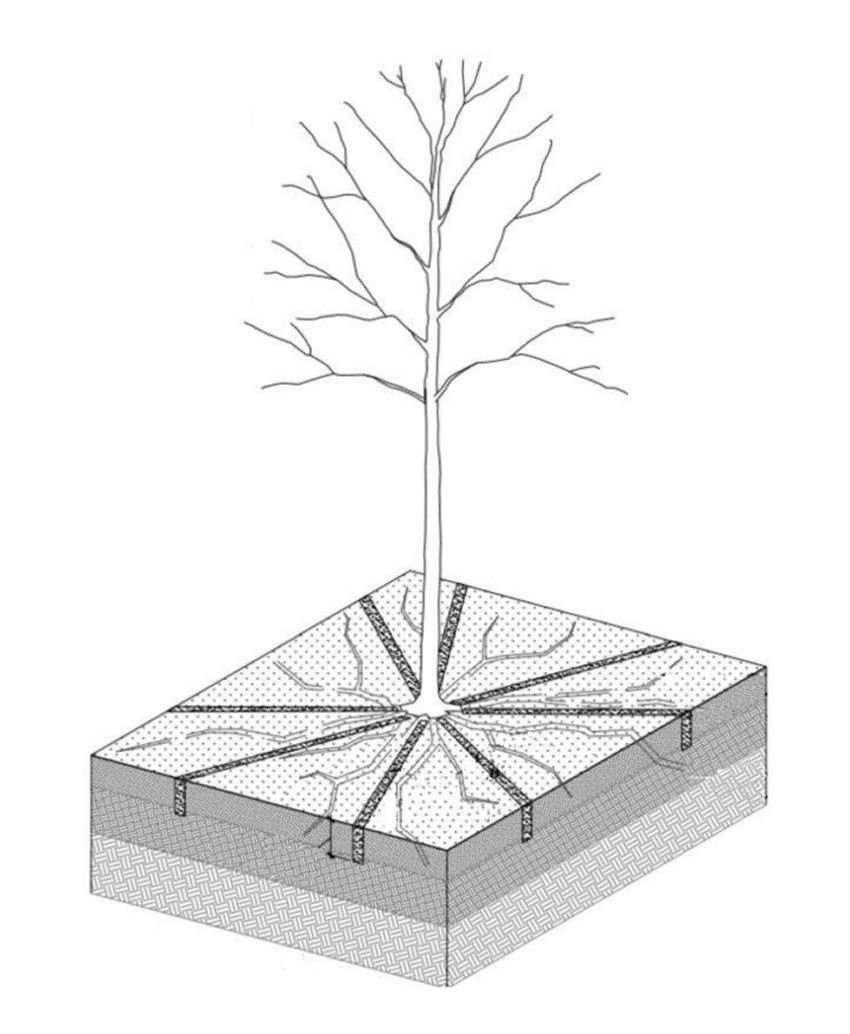
|
|
Radial trenching should only be done or supervised by a Certified Arborist,
as it can easily cause the tree to become unstable or die if not done properly.
The trenches seen in this sketch are dug with an air-spade and laid down in between primary roots. After the trenches are created they are filled with amended soil. The composition of this amended soil will naturally vary depending on whether the native soil is too fast, or too slow. The trenches can extend beyond the area where the root system currently is bound thereby providing good soil composition for the roots to grow into. |

|
|
Once the trenches are created, they would look similar to this,
(perhaps wider or deeper) before they have been filled with amended soil.
Where the plants are surrounded with slow [HCR] soil, it's important to make sure the amended soil is improved, not radically more sandy. The root systems will establish into a moderately faster soil as compared to one that doesn't hold water and so appears foreign to the new roots. |
|
Irrigation Scheduling
is another technique for dealing with problem soils
Even when a problem soil is improved or in the process
of that, irrigation scheduling is key to success.
When a single irrigation zone covers radically differing soil types (slow or fast) or plant types (turf & shrubs), complications are multiplied. This practice is strongly discouraged. For Slow Soils; and where possible, if you can extend the "run-time" of your irrigation cycle towards longer periods like 2 to even 4 hours, this; long slow water cycle will have a chance to soften up the soil enough to allow root development to proceed. For Sandy soils, scheduling shorter run-times, but more frequent irrigations will help. |
|
The Concept of Canopy and Root System |
|
Being successful when remediating soil requires
an awareness of how far from the trunk and how deep
the holes or trenches need to be established.
To have an idea for this, consider the canopy of the tree or shrub.
|
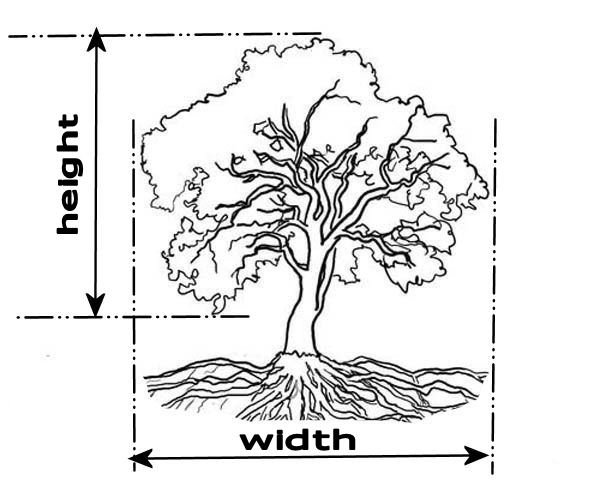
|
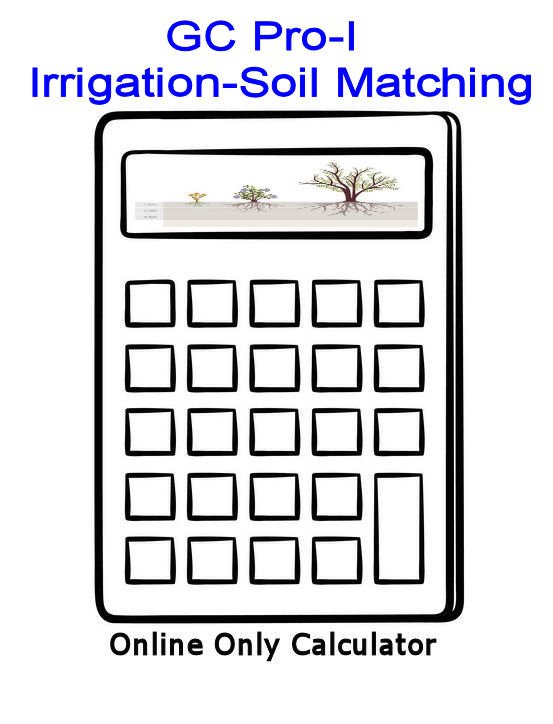
|